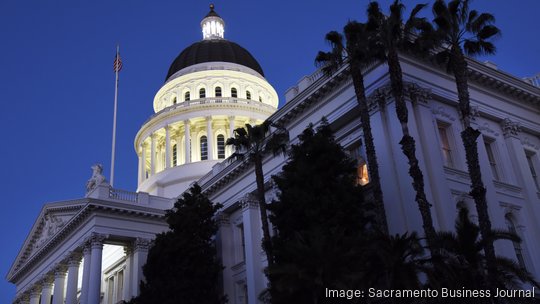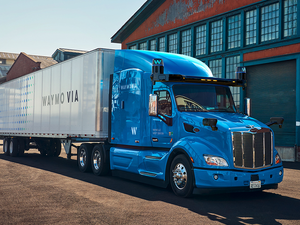
A bill that threatens to dramatically slow—and potentially halt—nearly a decade of innovation in autonomous trucking has passed the California Legislature. Its ramifications extend far beyond California and the trucking industry.
Assembly Bill 316, which sits on Gov. Newsom’s desk, would significantly hinder the deployment of autonomous heavy-duty trucks by requiring those vehicles to have human drivers behind the wheel even after passing rigorous safety testing, certification and ongoing inspections by California’s Department of Motor Vehicles.
Overall, requiring human drivers to be present during testing is reasonable, but codifying this requirement for every vehicle deployed will hobble the sector, losing out on the significant environmental and safety benefits that large-scale deployment of autonomous trucking promises to bring. Furthermore, many AVs do not even accommodate a human driver—these types of regulations can push such applications out of the U.S. market entirely.
Autonomous trucks are an essential technology to address the trucking sector's longstanding emissions and safety challenges. They can be designed and operated in ways that significantly reduce oil consumption when they do not require human drivers. Our modeling estimates that scaled deployment of autonomous trucks in the U.S. could save more than 20 billion cumulative gallons of diesel by 2050 in the heavy-duty freight sector. Furthermore, the trucking industry faces a severe staffing shortage: Approximately 70,000 long-haul trucking jobs are unfilled nationally due to the grueling hours, time away from home and physical demands of the work.
Currently, despite only accounting for 4% of vehicles on the road, long-haul trucks account for roughly 13% of total U.S. gas consumption. They also move more than 70% of all freight in the United States, about $725 billion annually. That’s everything from the furniture in our homes to the groceries on our shelves to vital medicines and hospital equipment. It is hard to overstate how fundamental long-haul trucking is to our economy and standards of living. However, the noise and air pollution it generates is also concentrated in lower-income neighborhoods and communities of color, burdening vulnerable populations with these unfortunate externalities.
As California rightly moves to slash greenhouse gas emissions and toxic air pollution, autonomous vehicle technology can help to meet the state’s ambitious goals without slowing the vital flow of goods that long-haul trucks are responsible for moving.
California is a policy leader that often sets the agenda for the rest of the country: Sacramento’s precedents ripple to other states and can have a chilling effect on a still-nascent industry. Furthermore, a requirement like this in California alone or a smattering of other states could significantly stifle interstate commerce, creating a virtual wall for autonomous trucks bringing goods from other states.
There are even global considerations. While the U.S. currently leads the world in autonomous innovation, competitors like China are not far behind. Slowing down our progress would cede our competitive advantage. We have seen this happen with other recent innovations, like the development of lithium iron phosphate batteries, which revolutionized the electric vehicle industry. While initially developed in the United States, China has since cornered the market on the scaled manufacturing of these batteries. Let’s not let autonomous vehicles be another example in which the U.S. falls behind on deployment of a technology that it created.
The truth is that California is a leader in autonomous vehicle technology because its regulatory approach over the past decades has been measured in balancing innovation and safety. State regulators, working closely with private sector actors, have given industry the freedom to innovate while putting important safety standards in place.
If Gov. Newsom signs AB 316 into law, California will cease to be a model for how to innovate and instead will stall a nascent industry that promises to make roads safer, increase efficiency and reduce the root causes of climate change.
Allanté Whitmore is director of the Autonomous Vehicles Initiative at SAFE, a nonpartisan, nonprofit organization focused on energy and transportation policies that advance the nation’s economic and national security.









